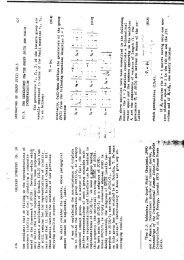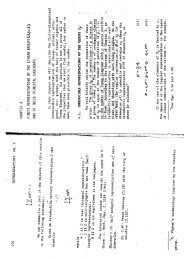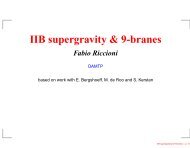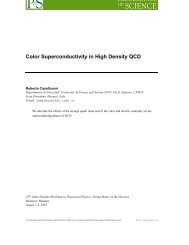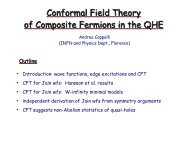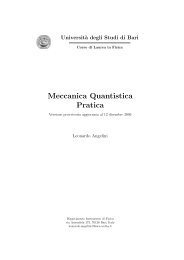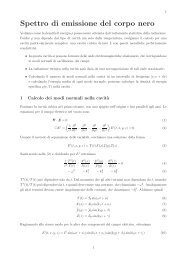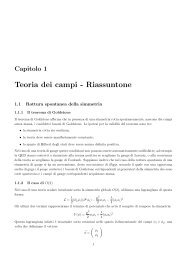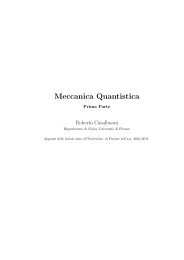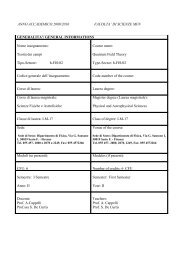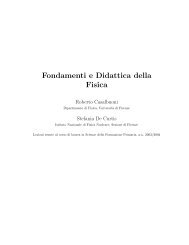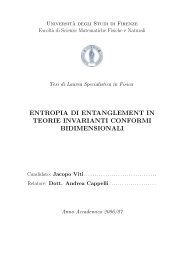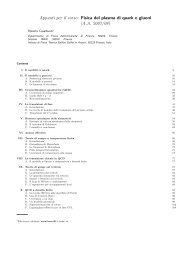arXiv:hep-ph/9804260 v2 16 Jun 1998 - Florence Theory Group
arXiv:hep-ph/9804260 v2 16 Jun 1998 - Florence Theory Group
arXiv:hep-ph/9804260 v2 16 Jun 1998 - Florence Theory Group
Create successful ePaper yourself
Turn your PDF publications into a flip-book with our unique Google optimized e-Paper software.
Here we have employed a soliton model which besides the pseudoscalar octet mesons<br />
contains a scalar field. This scalar field has been introduced as to mock up the QCD<br />
trace anomaly. Although this is presumably not the most natural choice for an effective<br />
meson theory, we have motivated this model from the simplicity to include the breathing<br />
degree of freedom and its previous success to reasonably describe the spectrum of the<br />
low–lying 1+<br />
3+<br />
and baryons as well as various of their static properties.<br />
2 2<br />
Finally one could object that the prediction of exotic states like Z + would completely<br />
be due to the adopted quantization scheme for the flavor degrees of freedom. In the<br />
alternative bound state approach [41] a penta–quark state with the quantum numbers<br />
of the Z + would emerge as a bound system of the soliton and a kaon, while the ordinary<br />
hyperons are considered as anti–kaons bound in the soliton background. Such penta–<br />
quark states are found to be unbound unless the kaon mass is artificially tuned to about<br />
1GeV. However, the resonance doubling found in the nucleon and Σ channels around<br />
2GeV is not without experimental support which indicates that exotic representations<br />
like the 10 indeed have <strong>ph</strong>ysical significance.<br />
Acknowledgments<br />
I am grateful for valuable discussions with R. Alkofer, H. Reinhardt, J. Schechter<br />
and H. Walliser. W. Eyrich is thanked for pointing out the relevance of the present<br />
study while visiting the Tübingen Graduiertenkolleg Hadronen und Kerne. Furthermore<br />
I would like to thank M. Polyakov for bringing ref [33] to my attention and for discussions<br />
on details of ref [3].<br />
This work is supported by the Deutsche Forschungsgemeinschaft (DFG) under con-<br />
tract Re 856/2-3.<br />
19



